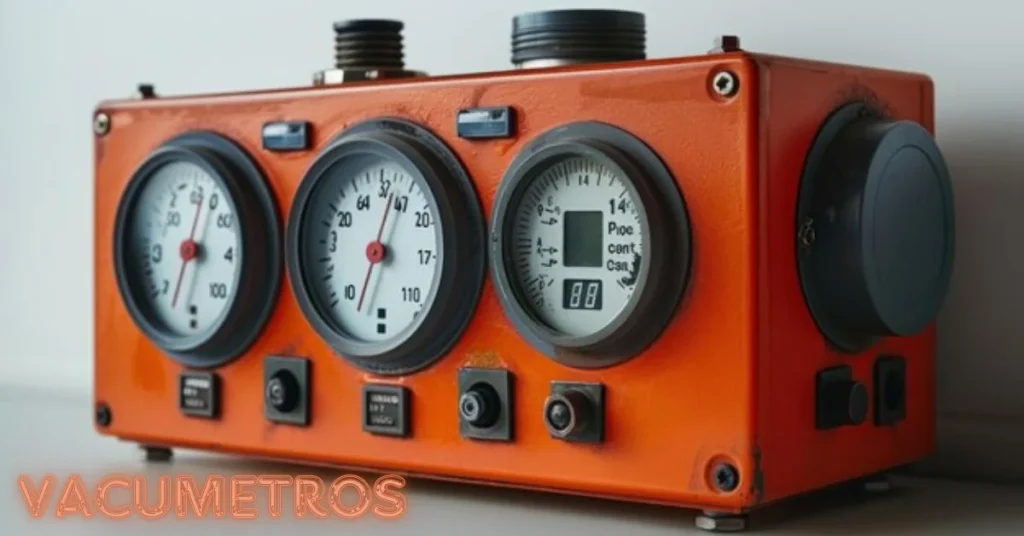Introduction to Vacuum Technology
Vacuum technology is a fascinating field that plays a crucial role in various industries. From manufacturing to research laboratories, maintaining precise vacuum levels ensures optimal performance and safety. In this world of low pressures, vacumetros emerge as indispensable tools for anyone serious about achieving accuracy.
What exactly are vacumetros? These devices measure the pressure within a vacuum system, helping professionals monitor and manage their processes effectively. Understanding the importance of these instruments can be the difference between success and failure in many applications.
In this blog post, we will explore everything you need to know about vacumetros—from their types and uses to maintenance tips and technological advancements. Whether you’re an industry veteran or just starting out, there’s something here for everyone eager to grasp this essential aspect of vacuum measurement.
What is a Vacumetro?
A vacumetro, commonly known as a vacuum gauge, is an instrument designed to measure the pressure within a vacuum system. This measurement helps determine how effectively air or other gases have been removed from a space.
Vacumetros can provide readings in various units, such as torr, millibar, or inches of mercury. The specific unit often depends on the application and industry standards.
These devices play a crucial role across diverse sectors—including manufacturing, research laboratories, and food packaging—where maintaining precise vacuum conditions is vital for optimal performance.
Understanding the functionality of vacumetros allows professionals to monitor and control processes effectively. Proper measurements ensure that equipment operates efficiently while preventing potential failures or contamination risks associated with improper vacuum levels.
Types of Vacumetros and their Uses
Vacumetros come in various types, each designed for specific applications. One common type is the mechanical vacumetro, which uses a spring mechanism to measure pressure changes. These are straightforward and often found in laboratories.
Then we have digital vacumetros that provide precise readings on an electronic display. They are favored for their accuracy and ease of use in industrial settings where exact measurements matter.
Another notable type is the Pirani vacumetro. This device measures low pressures by detecting heat loss from a heated wire. It’s ideal for vacuum systems requiring high sensitivity.
There’s the capacitance manometer, known for its exceptional precision at ultra-high vacuum levels. It’s used extensively in research facilities and semiconductor manufacturing.
Each of these instruments serves distinct needs across different industries, making selection crucial based on your specific requirements.
How to Choose the Right Vacumetro for Your Needs
Selecting the right vacumetro requires a clear understanding of your specific requirements. Start by assessing the pressure range you need to measure. Different applications demand different levels of vacuum, so look for gauges that meet those criteria.
Next, consider the environment where you’ll use it. Harsh conditions may require more robust and durable equipment designed for extreme temperatures or corrosive substances.
Accuracy is also crucial. Some industries tolerate minor deviations, while others need high precision. Investigate models with various accuracy ratings to find one that aligns with your standards.
Additionally, think about ease of use and readability. Digital displays often provide clearer readings than analog ones, making them easier to interpret at a glance.
Don’t overlook additional features like data logging capabilities or remote monitoring options if they fit within your budget and needs.
Maintenance and Calibration of Vacumetros
Regular maintenance is crucial for the longevity and accuracy of vacumetros. Dust, moisture, and other contaminants can interfere with their performance. Keeping them clean is essential.
Calibration ensures that the measurements taken are precise. Calibration should occur at least once a year or after significant usage. This process involves comparing the vacumetro readings against a known standard and adjusting it accordingly.
Use manufacturer guidelines as your roadmap during maintenance checks. Inspect seals and connections to prevent leaks, which can lead to erroneous readings.
Additionally, software updates may enhance functionality in digital models. Always stay informed about any advancements offered by manufacturers to keep equipment operating optimally.
Creating a consistent schedule for both maintenance and calibration will help avoid unexpected failures during critical operations. An effective strategy promotes not just efficiency but also safety in various applications where accurate vacuum measurement is vital.
Advancements in Vacumetro Technology
Recent advancements in vacumetro technology are transforming how industries measure vacuum levels. Modern vacumetros now feature digital displays that provide real-time data, making readings more accurate and easier to interpret.
Wireless connectivity has also entered the scene. Many new devices allow users to transmit data directly to smartphones or computers. This innovation enhances monitoring capabilities and enables remote management of vacuum systems.
Additionally, enhanced materials have improved durability and resistance to harsh environments. These upgrades ensure vacumetros maintain their precision over time, even in challenging conditions.
Automation is another exciting trend. Some advanced models integrate with automated systems for precise adjustments based on vacuum measurements, optimizing processes across various applications.
As these technologies evolve, industries can expect more efficient operations and greater reliability from their vacumetros.
Benefits of Using Vacumetros in Various Industries
Vacumetros play a crucial role across multiple industries, ensuring precise measurements that enhance efficiency and safety. In the pharmaceutical sector, they help maintain sterile environments by accurately monitoring vacuum levels in processing equipment.
In food packaging, vacumetros are essential for achieving optimal sealing conditions. This not only extends shelf life but also preserves flavor and nutritional value.
Manufacturing processes benefit from accurate vacuum measurement as well. It allows for better control of material handling and minimizes defects during production.
The automotive industry relies on vacumetros to test fuel systems and ensure optimal engine performance. Accurate readings contribute to improved vehicle reliability.
Even in research laboratories, these tools support experiments requiring specific atmospheric conditions. With their diverse applications, vacumetros prove invaluable in maintaining high standards of quality and precision throughout various fields.
Conclusion: Why Every Industry Needs a Reliable Vacumetro
Every industry engages with processes that require precise control of vacuum levels. From pharmaceuticals to food packaging, the need for an accurate measurement tool cannot be overstated. Vacumetros play a pivotal role in ensuring product quality and safety.
A reliable vacumetro ensures that systems operate efficiently without contamination or failure. It provides peace of mind, knowing that measurements are dependable and consistent. Industries investing in these instruments not only meet regulatory requirements but also improve overall operational efficiency.
In a world where precision is key, having access to advanced vacuum measurement technology is essential. Vacumetros are more than just tools; they represent a commitment to excellence across various applications. As industries evolve and innovate, so too must their capabilities in measuring vacuum pressure accurately. Embracing this technology can lead to better products, improved processes, and ultimately greater success.
FAQs
What is a vacumetro?
A vacumetro, or vacuum gauge, is an instrument used to measure the level of vacuum within a system. It helps monitor and ensure the efficiency of processes across various industries.
Where are vacumetros commonly used?
Vacumetros are widely used in manufacturing, research laboratories, medical facilities, and any environment where accurate vacuum measurement is crucial for process control.
How do vacumetros work?
Vacumetros function by detecting the pressure difference between the vacuum and a reference atmosphere, converting this measurement into readable data to monitor vacuum levels.
Why is vacuum measurement important?
Accurate vacuum measurement is vital for maintaining optimal performance and safety in systems, preventing equipment failure, and ensuring consistent process quality.
What types of vacumetros are available?
There are several types of vacumetros, including mechanical, electronic, and digital gauges, each designed to suit different levels of vacuum measurement and specific industry needs.







